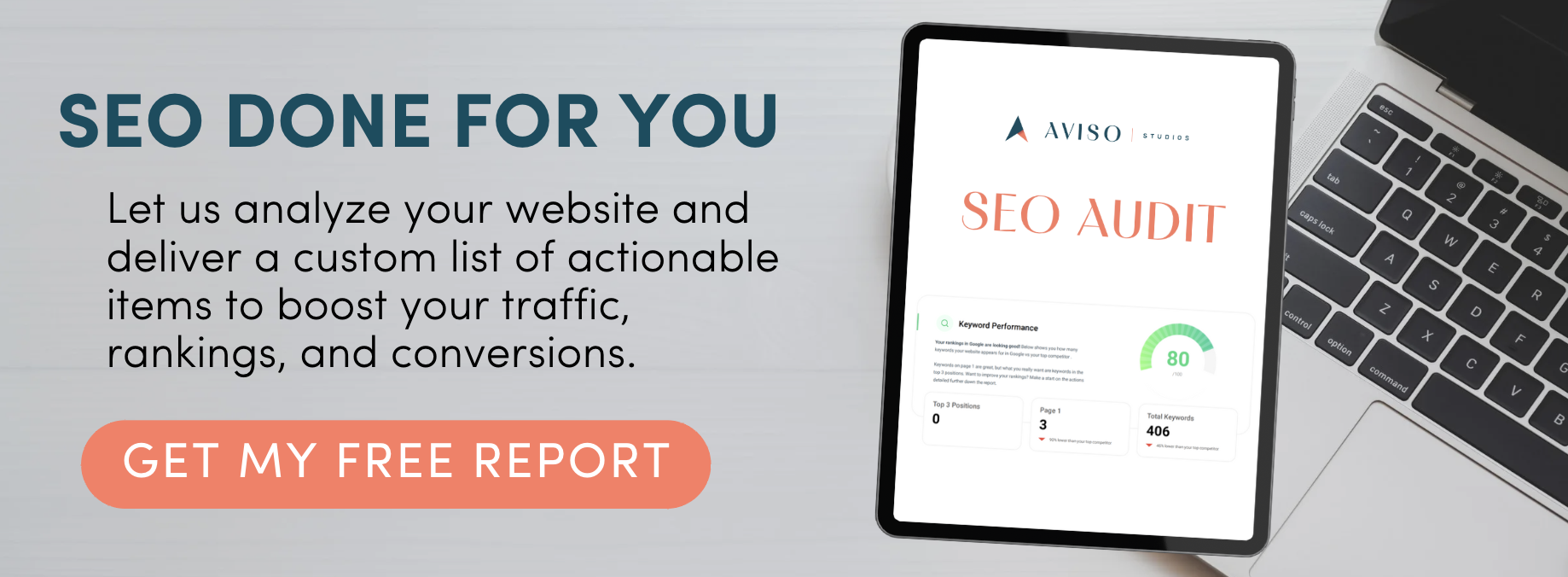Get More Website Traffic: Optimize Your Images for Google
They say a picture is worth a thousand words—but what if it was worth a thousand clicks?
Most business owners put all their focus on keywords, backlinks, and content when optimizing their website for search engines. But here’s the secret: your images might be killing your rankings.
Google scans images just like it scans text. If your site is loaded with huge, slow, or unoptimized images, you’re not just frustrating your visitors—you’re telling Google that your site isn’t worth ranking.
The good news? Fixing your image SEO is easy. A few small changes can boost your rankings, improve your site speed, and increase conversions. Let’s break it down.
What Is Website Image SEO, and Why Does It Matter?
Image SEO is the process of optimizing photos and graphics on your website so they load faster, rank better, and enhance user experience. That means choosing the right file formats, resizing images, adding alt text, and ensuring mobile-friendliness.
But this isn’t just about search rankings.
When images aren’t optimized, they slow your website down. A slow site leads to higher bounce rates, fewer conversions, and lost sales. Google rewards sites that load fast and provide a great experience. That means image optimization is a direct path to better rankings and more customers.
And here’s the kicker: Visual search is exploding.
Google Lens alone handles 12 billion searches per month. If your images aren’t optimized, they won’t appear in Google Images, featured snippets, or visual search results. That’s a massive missed opportunity.
Why Optimizing Your Website’s Images is a Game-Changer
1. Your Site Will Load Faster (And Rank Higher)
Google has made it clear: site speed is a ranking factor. And guess what? Images are the #1 culprit behind slow websites.
If your site takes more than three seconds to load, over half of your visitors will leave. That means lost sales and a drop in rankings.
Optimized images load faster, making your site more Google-friendly and user-friendly.
2. Your Users Will Stick Around Longer
We live in a scroll-and-swipe world. If your images are slow, distorted, or oversized, your visitors will bounce before they even read your content.
Well-optimized images load instantly, look sharp, and keep people engaged. The result? More time on site, lower bounce rates, and higher conversions.
3. You’ll Make Your Website More Accessible
Google values accessibility. Alt text (alternative text) helps visually impaired users understand your images using screen readers.
But alt text isn’t just about inclusivity—it also helps Google understand your images, which improves search rankings.
4. You’ll Convert More Visitors Into Customers
Speed + clarity = more sales.
People make split-second decisions when shopping online. If your product images take too long to load or look low-quality, you’ll lose buyers.
Optimized images ensure crisp, fast-loading visuals that build trust and drive sales.
How to Optimize Images for SEO (Without Breaking a Sweat)
1. Pick the Right Image Format
Not all image files are created equal. Choosing the right format balances quality and speed.
✅ WebP – Best for most websites. High quality, small file sizes.
✅ AVIF – Even better compression than WebP, but not supported everywhere (yet).
✅ JPEG – Good for high-quality photos but larger file sizes.
✅ PNG – Great for graphics that need transparency but slows down your site if overused.
For most websites, WebP is your best bet. It provides the same quality as JPEG but at half the file size.
2. Resize Images Before Uploading
Uploading huge, uncompressed images is one of the biggest SEO mistakes out there.
Your images should be big enough to look sharp but small enough to load quickly.
📌 Best image sizes for websites:
Blog images: 1200px wide
Product photos: 500–1000px wide
Hero images: 1600px wide
Background images: Lower resolution to improve load times
Pro tip: Use free tools like Canva or TinyPNG to resize images before uploading.
3. Compress Images Without Sacrificing Quality
Even properly sized images can slow your site down if they’re not compressed.
Compression reduces file size without reducing quality, making your images load faster.
🛠️ Best free image compression tools:
TinyPNG (Great for PNGs and JPEGs)
ImageOptim (Mac-friendly and effective)
Squoosh (Google’s own image optimizer)
4. Rename Your Image Files for SEO
Google reads image file names—so don’t just upload "IMG12345.jpg."
Instead, use descriptive, keyword-rich file names.
❌ Bad: IMG12345.jpg
✅ Good: black-leather-handbag-gold-zipper.jpg
This tiny tweak helps your images rank in Google Images and search results.
5. Write Alt Text That Actually Describes the Image
Alt text helps search engines and screen readers understand an image. It’s also a ranking factor in Google Images.
❌ Bad: alt="handbag"
✅ Good: alt="Black leather handbag with gold zipper, ideal for work or travel."
Pro tip: Avoid keyword stuffing. Google penalizes unnatural alt text.
6. Enable Lazy Loading for Faster Pages
Lazy loading delays image loading until users scroll to them. This speeds up the initial page load and improves SEO.
Most platforms, including WordPress and Shopify, support lazy loading through plugins.
7. Use Schema Markup to Get Your Images Featured
Want your images to stand out in search results?
Adding schema markup tells Google exactly what your image is about.
📌 Best types of schema markup for images:
Product schema (for eCommerce images)
Recipe schema (for food blogs)
Event schema (for event promotions)
Use Google’s Structured Data Markup Helper to add schema and increase your chances of appearing in Google Shopping or rich snippets.
Final Thoughts: Stop Letting Your Images Hurt Your SEO
Most people ignore image SEO—which means you have an opportunity to get ahead.
Optimizing your images will:
✅ Make your website load faster
✅ Boost your rankings in Google
✅ Keep visitors engaged longer
✅ Increase conversions and sales
It’s simple, effective, and worth doing today.
Need help optimizing your site for SEO? Check out our blog for more expert tips on SEO, paid media, and conversion strategies. 🚀



